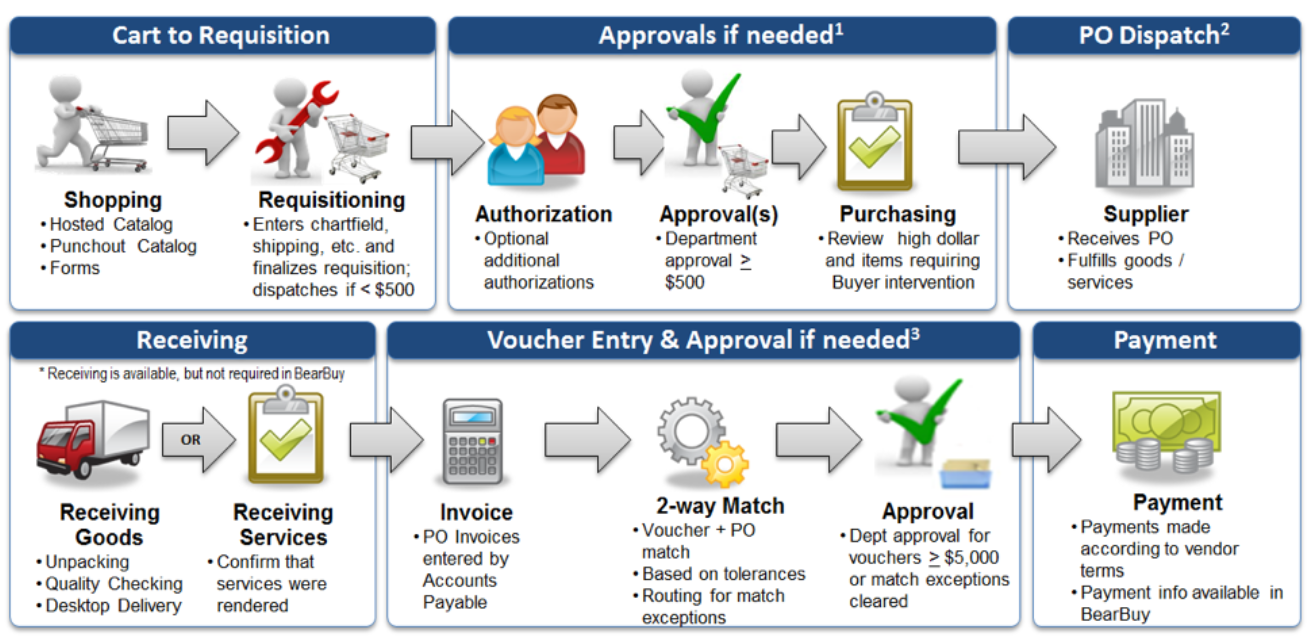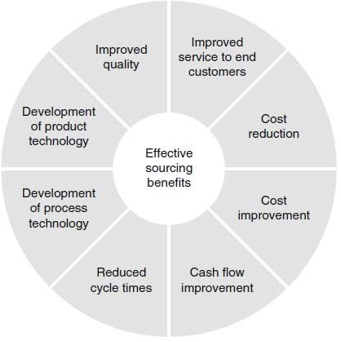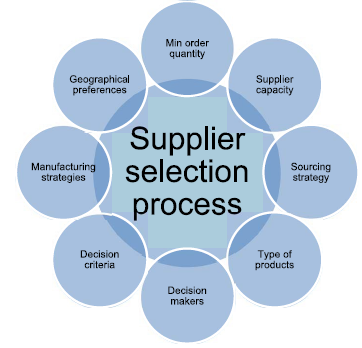Table of Contents
Introduction
Scope
This report describes the role of procurement and sourcing for large organization and its effect on supply chain. This report will not discuss any political ramifications, detail any specific regulations, or indulge in any bipartisan topics on the subject.

Discussion
Sourcing process
In this, we discuss about the sourcing role and strategies behind the decision-making process.
Author C. Scott (2011) defines sourcing as one of the components of Supply Chain operations reference model. It acts as an interface between the buying company and the suppliers. He splits sourcing into two main activities:
- Selecting new suppliers. This includes fining suppliers that provide products and services that meet the required needs, analyzing them and setting up contracts.
- The second is to manage the suppliers based over a period. It could be short, such as a one-off purchase such as a factory buying a new generator. Sourcing is a key driver for bottom line improvement within organizations.

Supplier Selection
In this section we will discuss, the criteria to select the best suited supplier and how it is connected to the strategy of the company in the long run.
Suppliers are considered the best tangible assets to any organization. It can be argued that it is tough for any supplier to excel in every dimension of performance, they have different strength and weaknesses and therefore, they need to be carefully assessed before placing an order.
It is highly strategical and recommended to have a good range of suppliers, if a company wants to create a competitive advantage and succeed in business. According to Damian Bell, the supplier selection is the process by which the buyer evaluates and contracts with suppliers. The selection process employs huge amount of company’s financial resources. In return, the buyer expects significant benefits from contracting with suppliers of high value.

Benefits
Increase Material Ordering Flexibility
A common material planning practice is to order material through a schedule of future requirements. The release authorizes production for deliveries to occur in the coming weeks. The longer it takes to build and deliver product, the more material needs to be released for production. If end-user demand drops suddenly, the manufacturer can be left with excess inventory.
Local Warehousing and Production
One of the primary benefits of using suppliers that are physically closer to your receiving point is that supply chain risk is reduced. In addition, local sourcing arrangements typically involve more frequent shipments, further lowering inventories and supporting just-in-time (JIT) manufacturing.
Improve the Reliability of the Supply Chain
In an ideal world, there is no need for safety stock because the buying organization is guaranteed that it will always receive the requested amount of material at the scheduled time. But this guarantee is almost impossible to make. The practical approach is to carry out a risk analysis to determine how much stock should be maintained to cover a potential interruption in supply. The less reliable the supply chain, the higher the risk and the more safety stock is required.
Conclusion
Summary
The study shows us how strategical Procurement and Sourcing can help in shaping up the company’s Supply Chain operations.
Analyzing the supplier according to the requirements of the business of the firm is important. They should be properly judged, based on their service, quality and ROI, only the right supplier needs to be chosen. The buying company needs to a network of suppliers because not all suppliers can cater best service for every product or every department.
Recommendation
It is better to analyze and perform background verification of the suppliers so that the procurement of the materials meets the requirements and the quality. Also, it is advised to draft the requirements and strategize the Supply Chain process of the buyer in a well-crafted procedure.
References
[1] Bartolini, A. (2012). Procurement Automation: How to do it RIGHT. Supply Chain Management Review, 16(3), p.40.
“Determine Technology Delivery Approach Before going down the path of selecting a solution and determine what method of solution delivery (installed/ on-premise or cloud-based) is appropriate for the organization. The two main delivery methods are Cloud-based Solution and Installed On-Premise Solution.”
[2] Eriksson, B. (2010). The diffusion and context of e-commerce and e-procurement. In: 2010 International Conference on Management and Service Science.
“More than 80% of Fortune 1000 has adopted e-procurement and e-Sourcing technologies according to Abeerdeen Group. Focus has been on integration and automation of the extended sourcing life cycle. The technology associated with Internet has increased the possibilities to do e-business, e-commerce, and e-procurement.”
[3] Sampson, S. and Spring, M. (2012). Customer Roles in Service Supply Chains and Opportunities for Innovation. Journal of Supply Chain Management, 48(4), pp.30-50.
“Manufacturing1 supply chains can be complex structures involving many players who assume various roles. In fact, the discipline of supply chain management largely involves identifying and coordinating the roles of the various entities.”
[4] A. Rijpkema, W., Rossi, R. and G.A.J. van der Vorst, J. (2014). Effective sourcing strategies for perishable product supply chains. International Journal of Physical Distribution & Logistics Management, 44(6), pp.494-510.
“We assess the effectiveness of the generated DIP in a supply chain context using a simulation model in combination with the process description generated in the supply chain analysis. We employ a hybrid discrete-continuous simulation tool, which includes both discrete features (i.e. individual products moving through a supply chain) and continuous factors (i.e. deteriorating product quality).”
[5]Ittmann, H. (2015). The impact of big data and business analytics on supply chain management. Journal of Transport and Supply Chain Management, 9(1).
“Many developments, including enterprise resource planning, materials requirements planning, efficient consumer response, customer relationship management, vendor management inventory, transportation management systems, just-in-time, warehouse management systems, total quality control, collaborative planning, forecasting, and replenishment, plus various other methodologies have contributed to this advancement.”
[6] Jensen, P. (2017). Strategic sourcing and procurement of facilities management services. Journal of Global Operations and Strategic Sourcing, 10(2), pp.138-158.
“An I-FM contract is in principle based on a single point of contact between client and provider. This turned out to be far from reality, because the provider is organised with a number of internal cost centre with each their budget responsibilities and DR had to negotiate and have contact with many different parties and management levels in the provider organization”.
[7] Hu, B., Chen, X., T. S. Chan, F. and Meng, C. (2017). Portfolio procurement policies for budget-constrained supply chains with option contracts and external financing. Journal of Industrial & Management Optimization, 13(5), pp.1-18.
“Because of the demand uncertainty from the end market, the short shelf-life product supply chain bears a greater market risk (stock shortage or overage) than the traditional durable product supply chain, which can afford to build inventory”
[8] Wuttke, D., Blome, C., Sebastian Heese, H. and Protopappa-Sieke, M. (2016). Supply chain finance: Optimal introduction and adoption decisions. International Journal of Production Economics, 178, pp.72-81.
“Supply chain finance (SCF) can improve supply chain performance by facilitating longer payment terms for buyers and better access to financing for suppliers. In spite of these clear benefits, there is empirical evidence for some hesitation and resistance to SCF adoption, manifesting in an often-substantial time lag between a buyer’s introduction of SCF and its adoption by all targeted suppliers.”
[9] Karakuş, R. and Zori. (2017). EFFECT OF SUPPLY CHAIN FINANCE ON VALUE OF FIRMS IN THE SUPPLY CHAIN. International Review of Economics and Management, pp.34-57.
“There are five elements in the supply chain process: sourcing, inventory, distribution, utilization, and payment. In the sourcing phase, for example, a company evaluates a supplier, determines a price, creates a contract and ultimately makes the purchase.”
[10] Namdar, J., Li, X., Sawhney, R. and Pradhan, N. (2017). Supply chain resilience for single and multiple sourcing in the presence of disruption risks. International Journal of Production Research, 56(6), pp.2339-2360.
“The sensitivity of procurement strategies to other key parameters such as recovery and warning capabilities is examined. One of the major findings is that buyer’s warning capability plays a vital role in enhancing supply chain resilience. We seek to build on these efforts to further support disruption planning and mitigation and to obtain a deeper understanding of the relationship between supply chain characteristics and resilience.”
Cite This Work
To export a reference to this article please select a referencing style below:


